
A programmable logic controller (PLC) or programmable controller is an industrial computer that has been ruggedized and adapted for the control of manufacturing processes, such as assembly lines, machines, robotic devices, or any activity that requires high reliability, ease of programming, and process fault diagnosis.
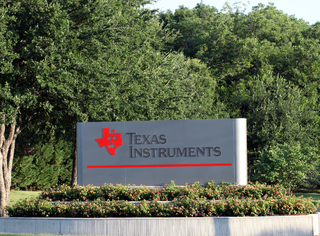
Texas Instruments Incorporated (TI) is an American information technology company headquartered in Dallas, Texas that designs and manufactures semiconductors and various integrated circuits. It is one of the top 10 semiconductor companies worldwide based on sales volume. The company's focus is on developing analog chips and embedded processors, which account for more than 80% of its revenue. TI also produces TI digital light processing technology and education technology products including calculators, microcontrollers, and multi-core processors. The company holds 45,000 patents worldwide as of 2016.
In mechanical and control engineering, a servomechanism is a control system for the position and its time derivatives, such as velocity, of a mechanical system. It often includes a servomotor, and uses closed-loop control to reduce steady-state error and improve dynamic response. In closed-loop control, error-sensing negative feedback is used to correct the action of the mechanism. In displacement-controlled applications, it usually includes a built-in encoder or other position feedback mechanism to ensure the output is achieving the desired effect. Following a specified motion trajectory is called servoing, where "servo" is used as a verb. The servo prefix originates from the Latin word servus meaning slave.
A digital video recorder (DVR) is an electronic device that records video in a digital format to a disk drive, USB flash drive, SD memory card, SSD or other local or networked mass storage device. The term includes set-top boxes (STB) with direct to disk recording, portable media players and TV gateways with recording capability, and digital camcorders. Personal computers are often connected to video capture devices and used as DVRs; in such cases the application software used to record video is an integral part of the DVR. Many DVRs are classified as consumer electronic devices; such devices may alternatively be referred to as personal video recorders (PVRs), particularly in Canada. Similar small devices with built-in displays and SSD support may be used for professional film or video production, as these recorders often do not have the limitations that built-in recorders in cameras have, offering wider codec support, the removal of recording time limitations and higher bitrates.

Cooper Industries was an American worldwide electrical products manufacturer headquartered in Houston, Texas. Founded in 1833, the company had seven operating divisions including Bussmann electrical and electronic fuses; Crouse-Hinds and CEAG explosion-proof electrical equipment; Halo and Metalux lighting fixtures; and Kyle and McGraw-Edison power systems products.

Bendix Corporation is an American manufacturing and engineering company which, during various times in its existence, made automotive brake shoes and systems, vacuum tubes, aircraft brakes, aeronautical hydraulics and electric power systems, avionics, aircraft and automobile fuel control systems, radios, televisions and computers.

FANUC is a Japanese group of companies that provide automation products and services such as robotics and computer numerical control wireless systems. These companies are principally FANUC Corporation of Japan, Fanuc America Corporation of Rochester Hills, Michigan, USA, and FANUC Europe Corporation S.A. of Luxembourg.
KUKA is a German manufacturer of industrial robots and factory automation systems. In 2016, the company was acquired by Chinese appliance manufacturer Midea Group.
Moog is an American-based designer and manufacturer of electric, electro-hydraulic and hydraulic motion, controls and systems for applications in aerospace, defense, industrial and medical devices. The company operates under four segments: aircraft controls, space and defense controls, industrial controls, and components. Moog is headquartered in Elma, New York and has sales, engineering, and manufacturing facilities in twenty-six countries.

A servomotor is a rotary or linear actuator that allows for precise control of angular or linear position, velocity, and acceleration in a mechanical system. It constitutes part of a servomechanism, and consists of a suitable motor coupled to a sensor for position feedback. It also requires a relatively sophisticated controller, often a dedicated module designed specifically for use with servomotors.
EtherCAT is an Ethernet-based fieldbus system developed by Beckhoff Automation. The protocol is standardized in IEC 61158 and is suitable for both hard and soft real-time computing requirements in automation technology.

Integrated Micro-electronics, Inc. provides electronics manufacturing services (EMS) and power semiconductor assembly and test services (SATS) with manufacturing facilities in Asia, Europe, and North America. Its headquarters is located in Biñan, Laguna.
In the field of Industrial Control Systems, the interfacing of various control components must provide means to coordinate the signals and commands sent between control modules. While tight coordination is desirable for discrete inputs and outputs, it is especially important in motion controls, where directing the movement of individual axes of motion must be precisely coordinated so that the motion of the entire system follows a desired path. Types of equipment requiring such coordination include metal cutting machine tools, metal forming equipment, assembly machinery, packaging machinery, robotics, printing machinery and material handling equipment. The Sercos interface is a globally standardized open digital interface for the communication between industrial controls, motion devices (drives) and input output devices (I/O). Sercos I and II are standardized in IEC 61491 and EN 61491. Sercos III is specified in standards IEC 61800-7; IEC 61784-1, -2, -3 and IEC 61158. Sercos is designed to provide hard real-time, high performance communications between industrial motion controls and digital servo drives.
The CC-Link Open Automation Networks Family are a group of open industrial networks that enable devices from numerous manufacturers to communicate. They are used in a wide variety of industrial automation applications at the machine, cell and line levels.
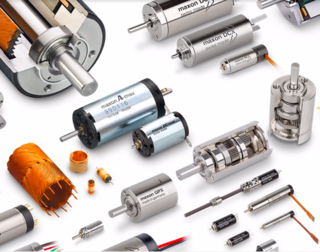
Maxon Group is a Swiss manufacturer and supplier of high-precision motor systems. The group, including its subsidiaries, offers electric AC motors, DC motors, encoders, gears, motor controllers, and sensors.

Micro Industries Corporation was a privately held American computer hardware manufacturer and software developer from 1978 to 2015. Based in Ohio and founded by Michael A. Curran, the computer primarily provided engineering services and contract manufacturing services to original equipment manufacturers (OEMs) for most of its existence. In the early 2000s, the company expanded to providing embedded systems for retailers and the healthcare sector in the form of kiosks and other industrial quiet PCs. Curran shuttered the company in 2015, anticipating his retirement.
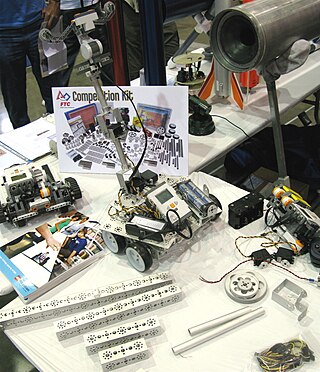
TETRIX Robotics consists of two robotic kits by Pitsco Education. The two sets are the TETRIX MAX building system and the TETRIX PRIME building system. They are intended to be used as educational robotics and for competitions such as the FIRST Tech Challenge.
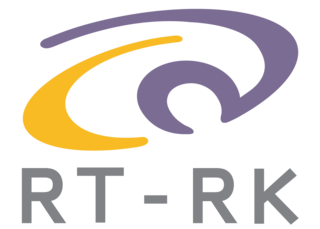
RT-RK is a Serbian R&D company and national research institute that delivers development services and own products in the arena of real time embedded systems, with focus on consumer electronics and automotive industry. Headquartered in Novi Sad, with offices in Belgrade, Banja Luka and Osijek (Croatia) with over 550 engineers, RT-RK is one of the biggest development houses in Southeast Europe.
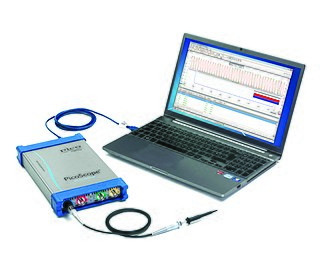
Pico Technology is a British manufacturer of high-precision PC-based oscilloscopes and automotive diagnostics equipment, founded in 1991. Their product range includes the PicoScope line of PC-based oscilloscopes, data loggers, automotive equipment, and most recently, handheld USB-based oscilloscopes. Since their inception in 1991, Pico Tech has been researching and developing PC-based oscilloscopes, when the market standard was analogue storage oscilloscopes. Pico Technology is one of two European scope manufacturers, and competes in the low to middle end of the instrumentation market.
A direct-drive simulator steering wheel is a simulator steering wheel with a direct-drive mechanism between the drive and output, i.e. without gearing, and is used similarly as with other simulator steering wheels for providing torque feedback so that the driver, through movement in the steering wheel, gets an interface for sensing what is happening to the car in the simulator. It is an example of human–computer interaction in driving simulators, racing simulators, and racing video games, and is an example of haptic technology











